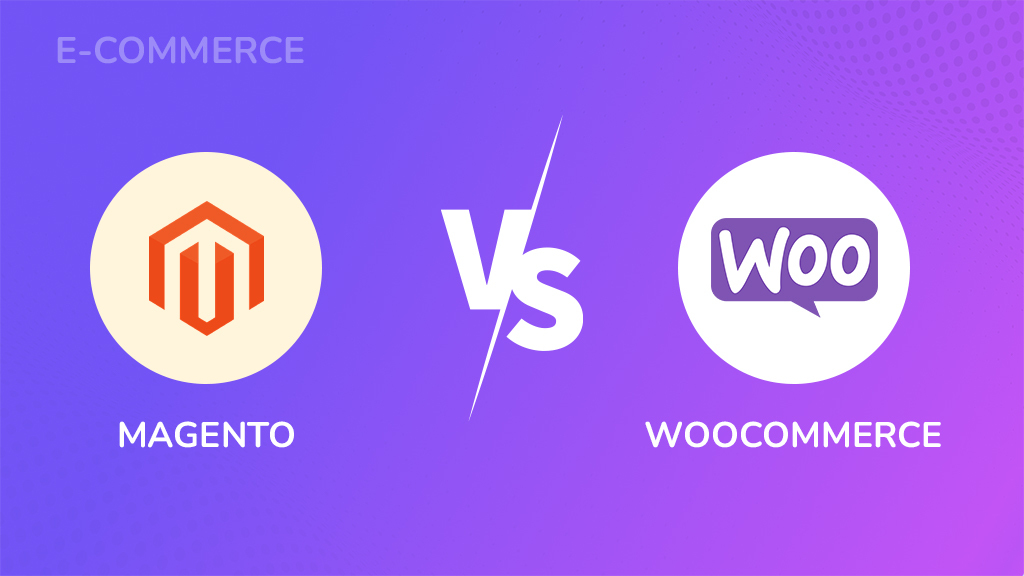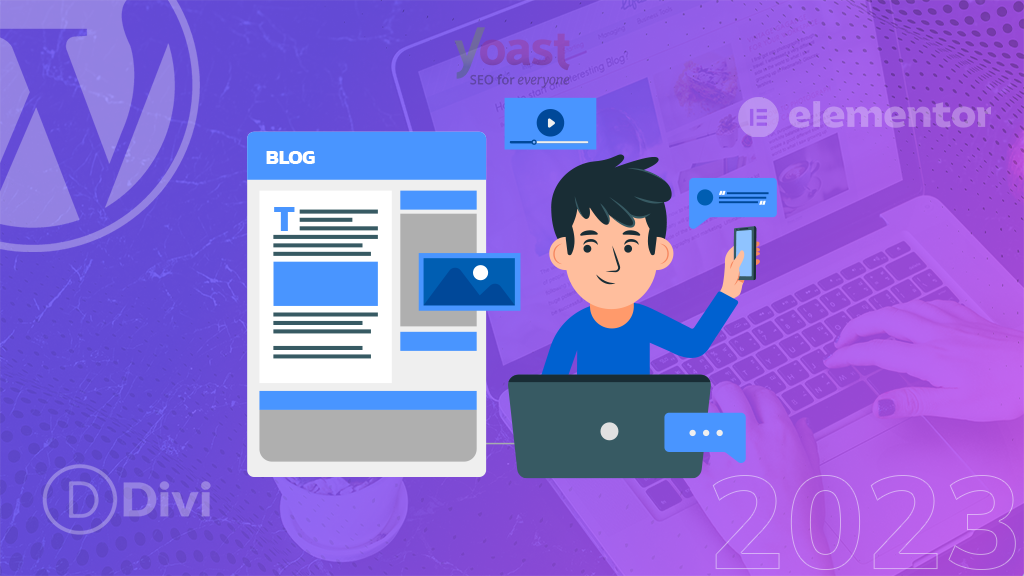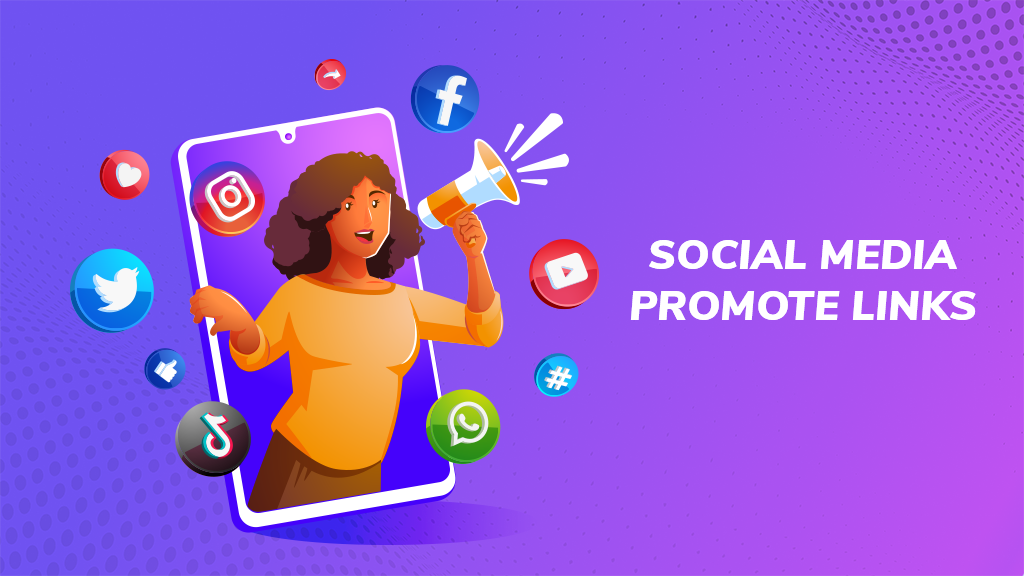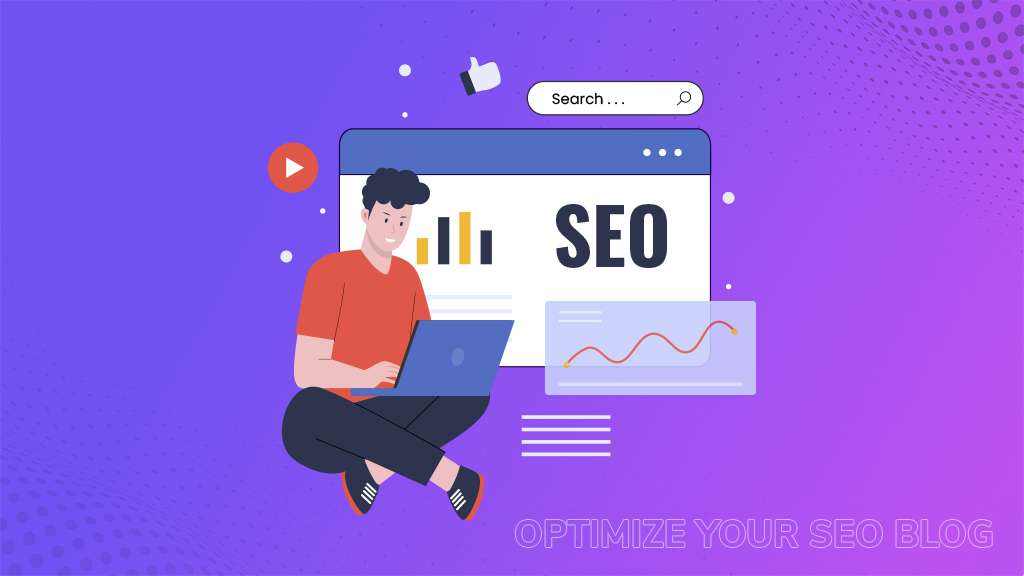
In the fast-paced digital age, where attention spans are shorter than ever, digital marketing campaigns have become the lifeblood of brand communication. These campaigns are more than just advertisements; they are strategic efforts to capture the hearts and minds of your audience in a digital landscape that’s constantly evolving.
Definition of Digital Marketing Campaigns
A digital marketing campaign is like a carefully planned and organized strategy to tell people about a product, service, or brand using the internet. It involves using different methods like making websites show up on Google searches, paying for ads, using social media, sending emails, and creating online content. The goal is to achieve things like getting more people interested in a product, bringing more visitors to a website, making more people know about a brand and increasing sales.
Importance of Having Effective Digital Marketing Campaigns
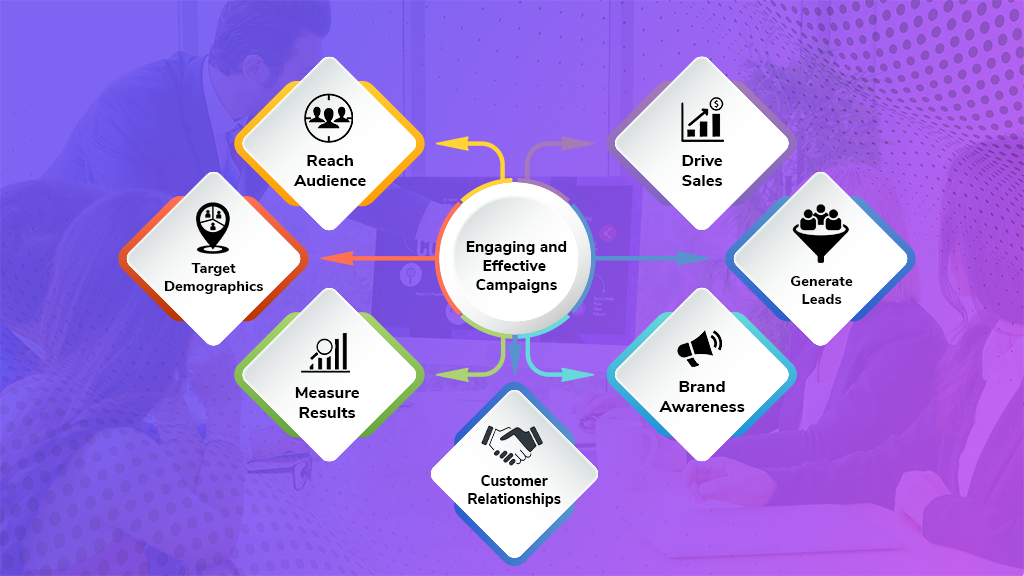
Digital marketing campaigns play a pivotal role in modern business strategies due to their ability to achieve several crucial objectives. Let’s delve into a more detailed explanation of each of the seven key reasons why digital marketing campaigns are so important:
1. Reach a Wider Audience
In the digital age, geographical boundaries no longer limit businesses. Digital marketing campaigns leverage the internet’s vast reach to connect with potential customers worldwide. This expansive reach means businesses can tap into previously untapped markets and audiences with just a click.
2. Target Specific Demographics
One of the remarkable advantages of digital marketing is its precision in audience targeting. Through various methods like demographic information, interests, online behaviors, and more, businesses can fine-tune their campaigns to reach the exact audience most likely to be interested in their products or services. This not only maximizes the impact of marketing efforts but also ensures a higher return on investment (ROI).
3. Measure Results
Digital marketing campaigns offer a treasure trove of data that allows businesses to monitor and analyze their performance. Metrics like website traffic, click-through rates, conversion rates, and more can be tracked in real-time. This valuable data indeed empowers businesses to make data-driven decisions and adjustments to their campaigns, ensuring they are continually improving and optimizing their marketing strategies.
4. Build Brand Awareness
Branding is a crucial aspect of any business’s long-term success. Digital marketing campaigns provide an effective platform to build brand awareness and establish authority in the industry. Businesses can achieve this by consistently producing high-quality, relevant content that resonates with their target audience. Sharing this content across various digital channels and engaging with the audience on social media platforms helps solidify the brand’s presence.
5. Generate Leads
A key objective of many digital marketing campaigns is lead generation. Businesses can entice potential customers to share their contact information through lead magnets such as ebooks, whitepapers, webinars, or newsletter subscriptions. These leads are valuable because they represent potential customers who have expressed interest in the business’s offerings.
6. Drive Sales
Ultimately, the primary goal of most businesses is to drive sales. Digital marketing campaigns can surely facilitate this by promoting products or services directly to the target audience. Various techniques, such as paid advertising, social media marketing, and email marketing, can be employed to encourage potential customers to make a purchase.
7. Improve Customer Relationships
Nurturing existing customer relationships is as important as acquiring new ones. Digital marketing campaigns can help enhance customer relationships by providing ongoing value and engagement. Strategies like loyalty programs, exclusive discounts, and responsive customer support via social media and email show customers that their satisfaction and loyalty are a top priority for the business.
What Defines Successful Digital Marketing Campaigns?
A good digital marketing campaign achieves its goals while making sure people have a good experience. Here are some important things that help make a digital marketing campaign successful:
1. Clear Goals
Digital marketing campaigns should have clear goals that you can measure. These goals should match the overall business plan.
2. Know Your Audience
It’s important to know who the campaign is for and to talk to them in a way that they’ll understand. This means understanding what they like, what’s important to them, and how they behave online.
3. Plan Carefully
You need to pick the right places to advertise online, create good content, and decide what message and offers to use. It’s also important to choose marketing tactics that work for the people you’re trying to reach.
4. Great Content
Your content should be interesting and grab people’s attention. This can include writing, pictures, videos, and other things that make people want to learn more.
5. Be Consistent
Using the same message on all the online places you advertise helps people recognize your brand and trust it more.
6. Use Effective Prompts
You should encourage people to do things like fill out forms, buy things, or subscribe to newsletters. These are called Calls to Action, and they help people know what to do next.
7. Keep Learning
It’s important to keep an eye on how your campaign is doing and make changes based on what you learn. This surely helps you get the best results for your money.
Four Easy Tricks for Successful Digital Marketing Campaigns
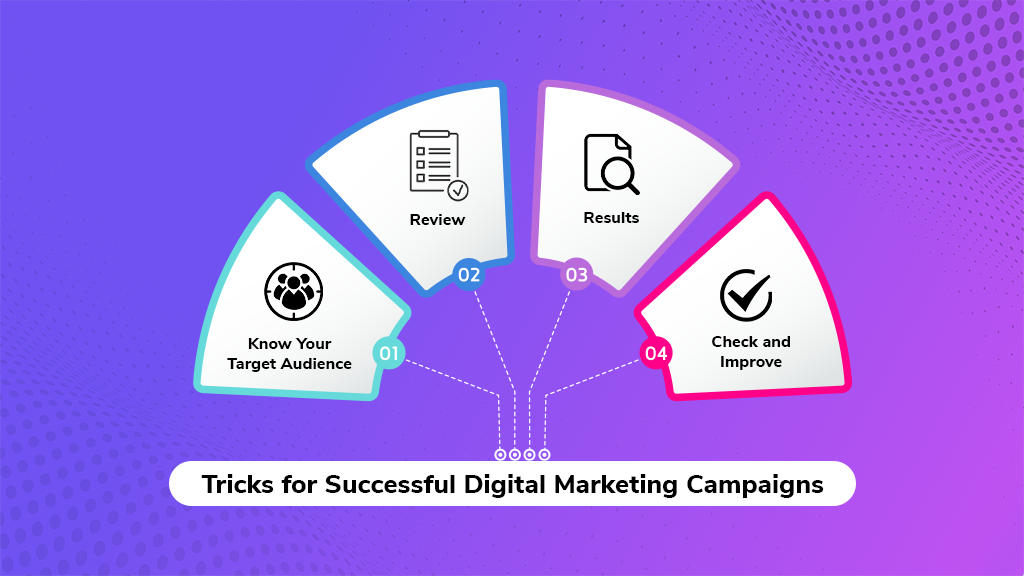
Trick 1- Know Your Target Audience
Before you start your digital marketing plan, it’s crucial to understand who your customers are and what they need. Here’s how to do it:
1.1 Speak Their Language and Connect on a Personal Level
- Speaking your audience’s language means understanding the words, phrases, and tones they use in their everyday conversations.
- It’s about using language that resonates with them, rather than jargon or technical terms that might confuse or alienate them.
- Connecting on a personal level involves showing empathy and understanding towards your audience’s needs, challenges, and aspirations.
- It’s about demonstrating that you genuinely care about their well-being and are not just interested in selling a product or service.
- This connection can be established through personalized communication.
- Address your audience by their first name in emails, tailor product recommendations based on their preferences, and acknowledge their feedback and opinions.
1.2 Understand Their Problems and What Makes Them Feel Excited
- To truly connect with your audience, you must understand their pain points and challenges.
- What problems are they trying to solve, and how can your product or service address these issues?
- Conduct surveys, interviews, or social listening significantly to gain insights into their concerns.
- Additionally, identifying what excites your audience is equally important. What are their passions, interests, and aspirations?
- Craft content and messages that tap into these positive emotions and create a sense of enthusiasm for your brand.
1.3 Create Detailed Profiles of Your Typical Customers to Customize Your Messages
- Building customer personas is a crucial step in tailoring your marketing messages effectively. These personas are detailed profiles that represent your ideal customers.
- Include demographic information (age, gender, location), psychographic details (interests, values, lifestyle), and behavioral traits (online behavior, purchasing habits) in your customer personas.
- Having these personas in place explicitly allows you to create highly targeted and relevant content and marketing campaigns that resonate with specific segments of your audience.
1.4 Be Aware of Different Cultures That Your Customers Come From
- In our globalized world, it’s vital to be culturally sensitive and aware of the diverse backgrounds your customers may have.
- Cultural differences can significantly impact how your messages are perceived.
- Research cultural norms, values, and taboos relevant to your target audience.
- Avoid using imagery, symbols, or language that may unintentionally offend or alienate certain cultural groups.
- In general, tailor your marketing content to reflect cultural diversity and inclusivity, showing that your brand respects and welcomes customers from various backgrounds.
1.5 Consider Partnering with Online Influencers
- Online influencers are individuals who have a significant following and influence within a particular niche or industry.
- In fact, partnering with them can help you reach a wider and more engaged audience.
- Choose influencers whose values align with your brand and whose followers match your target demographic.
- Their endorsement can lend credibility and trust to your products or services.
- Collaborate with influencers for sponsored content, reviews, or social media takeovers to showcase your offerings to their audience in an authentic and relatable way.
- By implementing these strategies, you can establish a deeper connection with your audience, ensuring that your digital marketing efforts are not only effective but also resonate on a personal and cultural level.
1.6 Focus on Actions and Results, Not Just Talking About Your Product
- In digital marketing, it’s essential to shift the focus from merely talking about your product or service features to highlighting the value it brings to customers’ lives.
- Emphasize how your offerings can solve their problems, fulfill their needs, or make their lives easier or more enjoyable.
- Use storytelling techniques to showcase real-life scenarios or success stories that demonstrate the positive outcomes your product or service has delivered to previous customers.
- In other words, these narratives create a more compelling and relatable message.
- Encourage your audience to take specific actions, such as signing up for a newsletter, requesting a demo, or making a purchase.
- These actionable steps should align with your overall marketing objectives and guide potential customers toward conversion.

1.7 Use Automation Tools to Send the Right Messages to the Right People
Automation tools in digital marketing can streamline your communication processes and ensure that messages are timely and personalized. Here’s how to effectively utilize automation:
- Segmentation
Divide your audience into distinct segments based on characteristics like demographics, behavior, or purchase history. Automation tools can then deliver tailored messages to each segment.
- Email Marketing
Use email automation to send personalized messages, such as welcome emails, abandoned cart reminders, or post-purchase follow-ups. These automated emails can especially nurture leads and drive conversions.
- Lead Nurturing
Automate the process of nurturing leads with drip campaigns. Send a series of targeted emails to educate and engage leads over time, gradually moving them closer to making a purchase decision.
- Social Media Scheduling
Plan and schedule social media posts in advance to maintain a consistent online presence. Automation tools allow you to post at optimal times when your audience is most active.
- Analytics and Reporting
Use automation to gather data on campaign performance. Monitor key metrics and receive automated reports that provide insights into what’s working and where improvements are needed.
- Personalization
Leverage automation to personalize messages by including the recipient’s name, recommending products based on their browsing history, or sending birthday greetings. Personalized content indeed tends to resonate better with audiences.
Trick 2- Review What You Have
Take a look at all the digital marketing things you’re doing now. Make a list and see how they’re helping you achieve your goals.
2.1 Ensure Online Efforts Drive Profit
The main aim of digital marketing is to boost profitability and revenue. Here’s how to make sure your online activities contribute:
- Align with Revenue
Evaluate each digital marketing activity to see how it impacts revenue, directly or indirectly. If it doesn’t boost your bottom line, reconsider its purpose.
- Optimize Conversions
Concentrate on enhancing conversion points in your online assets, like product pages or lead forms, to increase conversion rates.
- Cost vs. Revenue
Analyze costs, including ad spend and content creation, versus revenue generated to calculate ROI.
2.2 Amplify Successful Strategies
Scaling up winning strategies is key in digital marketing. Here’s how to do it effectively:
- Analyze Data
Review performance data to identify channels, campaigns, or content consistently delivering positive results. Overall, look for audience engagement patterns.
- A/B Testing
Fine-tune strategies by testing variations in elements like ad copy or email subject lines to find what resonates best.
- Allocate Resources
Altogether, invest more resources, budget, or effort into successful areas for potential exponential growth.
- Continuous Improvement
Regularly refine your top-performing campaigns to maintain effectiveness.
2.3 Assess and Adapt Underperforming Efforts
Not all digital marketing efforts succeed, which is okay. Here’s how to handle underperforming activities:
- Identify Issues
Investigate why a strategy or campaign falls short, whether it’s targeting, messaging, or technical issues.
- Cost-Benefit Analysis
Weigh potential returns against the resources needed to fix an underperforming element, considering opportunity costs.
- Experimentation
Test variations or adjustments before abandoning a strategy. Minor tweaks can lead to improvements.
- Goal Comparison
Measure underperforming activities against initial goals. If they significantly miss the mark without improvement, consider reallocating resources.
2.4 Grasp Your Product’s Value to Customers
Understanding your product or service’s significance to customers goes beyond its features. Here’s how to explore its value:
- Customer Research
Invest in thorough research to uncover customer needs, motivations, and pain points. What drives them to seek a product like yours?
- Unique Selling Proposition (USP)
Define what sets your offering apart and why customers should choose it. Ensure it aligns with your target audience’s specific needs by all means.
- Customer Engagement
Directly engage with customers through interviews or surveys to understand how your product benefits them and shapes their experiences.
Trick 3. Think about the End Result
Sometimes, we get so caught up in the product and the numbers (like how much money we’re making) that we forget why people buy from us.
3.1 Address Customer Challenges
Your product or service tackles specific customer challenges. To grasp this better:
- Identify Pain Points
Recognize the obstacles or frustrations customers encounter. Align marketing messages with these issues.
- Solutions Aligned
Ensure your product directly resolves these problems and reflect this in your marketing content.
- Customer Feedback
Continuously gather and analyze customer feedback, including product reviews and social mentions, to understand problem-solving capabilities.
3.2. Enhance Post-Purchase Experience
The post-purchase phase is crucial for building lasting customer relationships. Elevate it with:
- Effective Onboarding
Provide clear onboarding resources like tutorials and guides so that it will help customers use your product.
- Exceptional Support
Offer prompt and helpful customer support to address inquiries and issues.
- Success Stories
Share real-life examples of customers benefiting from your product to illustrate its positive impact.
- Loyalty Programs
Implement rewards for repeat customers to recognize and appreciate their continued support.
Trick 4 – Check and Improve
When you make your plan, be sure to include things you want to measure to see if your plan is working.
4.1. Prioritize Meaningful Metrics
Don’t solely focus on easily trackable metrics like social media likes and shares, as they may not truly reflect the impact of your digital marketing. Instead, align metrics with specific goals; for instance, prioritize website visits, form submissions, and conversion rates if your aim is to boost traffic or generate leads. Quality engagement from a few loyal customers often outweighs passive likes. Concentrate on conversion-related metrics such as click-through rates, conversion rates, and ROI for better insights.
4.2 Effective KPI Utilization
Utilizing Key Performance Indicators (KPIs) is vital for assessing digital marketing effectiveness. Opt for KPIs directly related to your goals; for example, if you aim to increase sales, consider KPIs like revenue generated, conversion rates, and customer acquisition costs. Establish benchmarks to gauge progress and regularly monitor KPIs using analytics tools. Therefore analyze data to identify patterns and areas for improvement, and adjust strategies based on KPI insights.
4.3 Adapt and Optimize
Adaptability is crucial in the dynamic digital marketing landscape. Continuously assess performance against KPIs and be alert to warning signs, such as declining engagement rates or high acquisition costs. Experiment with A/B testing to identify effective strategies and consider reallocating resources from underperforming channels or campaigns to more promising ones. Maintain open communication with your team or agency to gather insights and make informed plan adjustments.
Proven Strategies for Successful Digital Marketing Campaigns
The digital marketing strategies you choose depend on your business goals, like gaining leads or building brand awareness. It’s essential to align these strategies with your brand’s message. Here are some proven digital strategies to boost online visibility and generate leads.
1. Content Marketing
Create valuable content and promote it online to attract leads. For example, you can share an ebook on a landing page linked to an Instagram post. Diversify your content types, including blogs, videos, ebooks, and webinars, to engage and capture leads effectively.
2. Social Media Marketing
Reach a vast audience, around 4.6 billion people globally, through social media. You can target specific age groups and locations. Besides promoting your brand, building a community on social media allows meaningful engagement with prospects and creates brand advocates who promote your brand organically. Each social media platform needs its unique strategy and metrics.
3. SEO (Search Engine Optimization)
Optimize your content, like homepages, landing pages, or blogs, to improve online visibility. SEO helps drive traffic, enhances user experience, and boosts your brand’s authority. Key SEO elements include keywords, backlinks, links, meta descriptions, and images, all aimed at targeting potential customers online.
4. Paid Advertising
While organic marketing is essential, paid advertising can target new audiences effectively. Many platforms offer paid advertising, like social media networks and Google Ads. You can set budgets and track results easily, making it accessible for businesses of all sizes. You can also gather data to inform other marketing activities based on the performance of your paid campaigns.
5. Influencer Marketing
Collaborate with influencers whose audience aligns with your brand. Choose influencers not just by follower count but by their engagement and passion for relevant topics. Hence, partner with influencers for promotions, events, giveaways, or content creation to expand your reach.
6. Email Marketing
Email marketing remains effective for engaging interested customers. Segment your audience based on their activity and use AI-powered marketing automation tools for personalization. Encourage people to provide their information through enticing CTAs, social media promotion, pop-ups, and competitions, free downloads, and offers, blog subscriptions, reviews, webinars, or podcasts. Email marketing can provide valuable insights and engage potential leads effectively.
Conclusion
In conclusion, successful campaigns require a deep understanding of your audience, clear objectives, compelling content, and continuous adaptation. By following the strategies outlined in this comprehensive guide, you’ll be well-equipped to create digital marketing campaigns that resonate with your audience and drive business growth.



